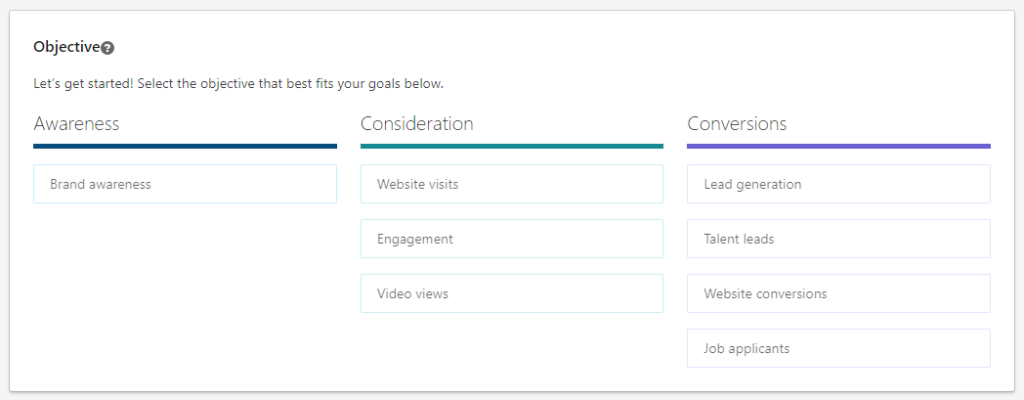
-
ROAR
- 7 Min Read
- Blog, PPC, Social Media
Should My Business Be Running Paid Social Ads?
Business owners and marketing managers across the globe, digital marketing doesn’t just include technical SEO, PPC and analytics. Paid social is an instantaneous way of targeting your audience on social media platforms. It aims to generate traffic, create awareness and increase brand authority.
Opportunities like these to promote your products and services to new audiences cannot be ignored.
Fact: In 2022, social media accounted for 33% of all digital ad spend.
What Are Paid Social Ads?
By definition, paid social is displaying advertisements across third-party social media platforms. This is done to target specific audiences or customer profiles. A paid social media strategy is often implemented to support an existing marketing strategy. Regularly, it is implemented to increase efficiency whilst gathering new subsets of customers.
Most social media platforms in this digital age can support paid social advertisements. Some key social media platforms for businesses include LinkedIn, Instagram and Facebook. All of these platforms allow businesses to run paid ads through LinkedIn Business and Meta Suite. According to reports, an ad on LinkedIn can reach 14.6% of the global population over eighteen-year-olds.
On platforms such as Instagram and Facebook, there is an opportunity to ‘boost’ social media posts. Boosting posts is slightly different compared to running a full social media ad campaign. It means you can choose to post from your account and boost it with a small budget across a time. Then point them towards your website or landing page.
Before you even think about Paid Social Ads you need to make sure that your business pages are up to scratch or if you haven’t already get them set up, we cover getting started with LinkedIn business pages in our blogs.
Should My Business Be Running Paid Social Ads?
The short answer is yes. Paid social strategies can captivate audiences and help achieve business goals by creating a loyal following and increasing brand authority. Through engaging, informative content tailored to your specific products and services whilst targeting audience specifics like job titles, location, and experience. Paid social gives you complete control to streamline your targeting process.
Here’s why you should consider running paid social ads:
- Increase brand awareness
Seeing is believing, right? Your dream customers and clients won’t suddenly become aware of your business, its team, services or products with a finger click.
Even so, keeping up with content writing and optimising your website and online presence to develop your organic presence is far from instant. In most cases, it can take up to 3 months to see small results. That is a key factor when considering your organic vs paid social media strategy.
Paid social media advertisement can increase your brand awareness almost instantly. With clever targeting, ads can become visible to your audience across their social networks with just a simple button click. And, in some cases, depending on your campaign set-up, your ads will only cease to appear when the budget has been fully utilised across your chosen period.
- Targeting
Organic search traffic comes from SEO (search engine optimisation) which is a process of optimising your website using keywords, helpful and informative content and website performance. Although it is possible to target your audience based on keywords and terms, they search online. Paid social strategies further nail down targeting, allowing marketers and business owners to hone in on who their audience is.
Think of location, job title, experience, and company size as a few examples. The beauty of this is that your ads will only be shown to those fitting the lengthy list of criteria you choose. More so, paid social advertising campaigns allow for the exclusion of certain job titles, companies and locations.
This is something to consider by excluding existing clients, competitors and partners. Do this to save your ads on people who 100% do not need to see them.
- In-depth reporting and analytics
The beauty of creating advertising on social media is the opportunity to track the results in the same place. Your social media platform will provide access to in-depth campaign statistics. Such as engagement rate, CTR (click-through rate), average spend (if not capped) and segments of your audience who took the most interest in your ads.
Quality information like this can lead to improved paid social campaigns and targeting with a more specific audience. Say you noticed that a business manager was taking an interest in your social ads more than, say, a sales manager. You can tailor your audience to exclude those not interacting with your ads. This can increase the amount of genuine CTR and increase traffic and conversions.
- Cost-effective advertising
Paid social offers you complete control. However, it’s a regular occurrence that the more you put into it, the more you get out of it. Although, advertising platforms will require a minimum amount of ad spend.
For example, based on a 30-day single image ad paid social campaign, LinkedIn requires a minimum of £240, equal to the £8 a day minimum spend. But this is normal due to paid social requiring a budget to spend on clicks.
- Drive leads and increase conversion rates.
This one is pretty obvious, I hope. What is the whole point of running paid social ads? It is merely to, in a way, put your business on the big screen. This is by putting it in front of the people who matter most – your target audience.
By doing this, it staggeringly increases the amount of leads a business receives. And an average of 28% of people who use the internet and view social media ads discovered new products.
What do we mean by a ‘lead’? A lead is when action is taken to contact a business through form fill-outs, phone calls and emails. A click-through on a paid social ad means some interest has been created between the customer and yourself. Now, it’s time to nurture that.
ROAR Tip: Put effort into the web page you intend to send your ad clickers to. Whether this is a service page on your website or a new landing page. Where your ad clickers end up needs to be designed to convert them and become a lead.
It should be designed to sell; why should they get in touch? Why are your products or services the right ones for them? Don’t be pushy, but cover all bases.
How to Run a Paid Social Campaign
Objective
When setting up an ad campaign via LinkedIn Ads Manager or Facebook Ad Manager, you must choose an objective. Facebook has various ad objective choices, including; awareness, traffic, engagement, leads, app promotion, and sales. LinkedIn, however, your choices are awareness, consideration and conversion with subcategories.
These objectives represent the stages of the sales funnel a customer will typically find themselves in. From awareness (top), consideration (middle), conversion (bottom) and nurturing (after).
Top of the funnel (awareness) requires setting objectives that target reach, impressions, and views. This aims solely to generate interest or awareness in something your business offers.
Middle of the funnel (consideration), these objectives typically focus on driving engagement or interaction, which will lead to potential customers hunting down more information about your offerings.
Bottom of the funnel (conversion), these objectives focus on completing a sale, purchase or sign-up. CTAs (call to action) that are commonly used are ‘Buy Now’ or ‘Get in Touch’.
After the funnel (remarketing), this is where your objectives change from creation, to sustaining the leads and conversions you have acquired. This is done via things like remarketing, display ads and email marketing to continue to nurture your audience.
Know your audience
As discussed earlier, the magical thing about paid social ads is the ability to target a specific audience. This is where audience research comes in. Every product or service matches an all-around customer or client. Many marketers build audience personas to fully break down their ideal customer.
Consider who your audience is.
Job role, name, background, their responsibilities.
What do they hope to achieve?
Their goals, and what problems they are aiming to combat.
Consider their current challenges.
Resources, budget and time.
Choose the right placement for your ads.
Not every social media platform will be right for your audience. Once you have established your audience persona, it’s important to work hard to determine the right platform for this person. Consider the age demographics on each platform, the number of users, mobile usage, and targeting etc.
Choose your ad format, budget and create the content.
Ads can be created in various formats, including single-image ads, carousel ads, video ads, and PDF resource ads. For example, a PDF Resource ad could be a great way of securing information about interested potential customers. By advertising a downloadable resource that can educate users, you can host it behind a form. Then use their information (email, phone number etc.) to add them to any newsletters or reach out to offer your services.
After establishing your ad format, it’s time to determine a budget. Remember, the platforms will likely have a minimum daily spend for ad clicks. Social media advertising is essentially an auction.
Your budget is used to bid on the best advertising spots on social platform feeds, pages and stories. If you win, your ad campaign will pay for securing a click, impression, app install, view etc.
Commonly, most campaign managers choose a lifetime budget which means setting an amount, say £300, to use across the campaign length.
Lastly, create your assets! Use whoever design tool you feel most comfortable with, or even outsource a graphic designer. For each campaign, create a minimum of 5 different ad variants for the campaign to switch between regularly. This is for variety and the opportunity to use different language and imagery to increase interest.
Check out our previous blog to find out more about creating social media assets.
Build your ad campaign.
After your assets are complete, it’s time to fully jump into your ad campaign. Ensure that the objectives, targeting, asset,s language and copy are all correct based on the ad campaign. It’s a great time to make sure you are getting the required ‘conversion’ from this campaign.
Are you sending them to a website? Landing page? Or instructing them to fill out a form for a download or call back enquiry. Make sure this is correct so you can achieve the desired results from your ad campaign.
Post-campaign launch optimisation.
Yes, your ad campaign is now live and is hopefully reaping the rewards of paid social. But it doesn’t stop there; reflect on your ad campaigns regularly to optimise them and increase the results.
Consider removing or adding job titles or audience segments to better tailor the campaigns. Perform social media audits and consider external events or seasonal changes. These can affect your advertisements and rectify your ads to expect and adapt to those.
Continue to evaluate, adapt and implement change to maximise the results of paid social on your business.
ROAR creates captivating PPC campaigns for businesses to shine on search engines and maximise online traffic. Speak to ROAR today about how we can make your business unmissable online.







